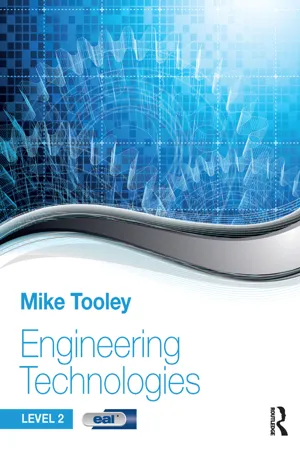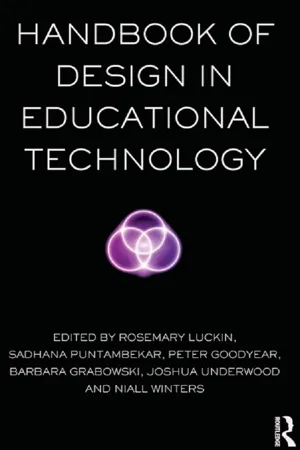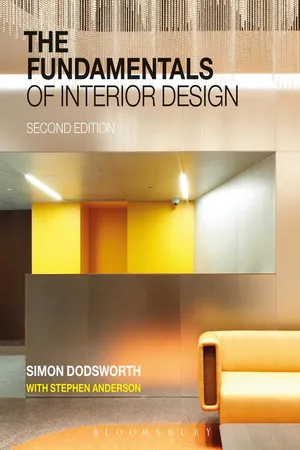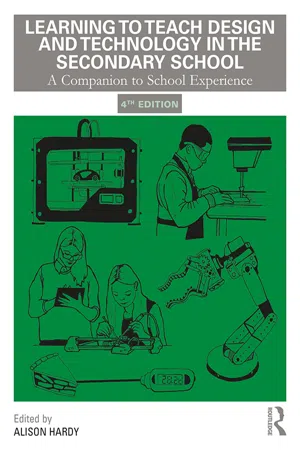Technology & Engineering
Sketching Techniques
Sketching techniques in technology and engineering involve the use of freehand drawing to visually communicate ideas and concepts. These techniques often include the use of basic shapes, lines, and shading to represent three-dimensional objects and structures. Sketching is a fundamental tool for brainstorming, problem-solving, and conveying design intent in the fields of technology and engineering.
Written by Perlego with AI-assistance
Related key terms
5 Key excerpts on "Sketching Techniques"
- eBook - ePub
- Edward E. Osakue(Author)
- 2018(Publication Date)
- Momentum Press(Publisher)
CHAPTER 2Basic Technical Sketching 2.1 IntroductionSketching is the process of creating graphic images of approximate size and shape or form to represent objects. Shapes are 2D (two-dimensional) figures, while forms are 3D (three-dimensional) figures. The sketches created are not accurate in proportions, so exact dimensions cannot be determined directly from them. Sketches are helpful in capturing design ideas and trying out different solutions in a fast and inexpensive way. Technical sketching is used as aid in conceptualization, spatial visualization, and translating imagination into visual models. It could also be used as means to amplify, clarify, and record verbal explanations. The ability to execute quick, correct, and clear sketches with good proportions quickly is a desirable skill for every technical professional. Engineers and designers use sketches to organize and record their ideas when solving design problems, especially at the early stages of the design, and to indicate changes and modifications to the existing designs. Most engineers use freehand sketches to communicate with designers and drafters. Drafters use it to clarify and offer suggestions for changes in designs to engineers. Executives use freehand sketches virtually every day to explain their ideas to assistants. Freehand sketching is used in the field very often and also in taking notes from existing drawings or verbal instructions from a client or supervisor.Technical sketching skills should include the ability to (1) sketch graphic elements and shapes, (2) complete partial drawings, (3) sketch multiviews and pictorials from physical object, (4) sketch multiviews and pictorials from existing drawings, and (5) sketch multiviews and pictorials from imaginations. This chapter focuses on freehand sketching of graphic elements and basic shapes. This is because the ability to create these entities is fundamental for the preparation of orthographic and pictorial sketches. Sketching skills in orthographic and isometric drawings are expected to be developed, as these topics are treated in later chapters. It is, therefore, strongly encouraged that assignments in those chapters should preferably start with sketching. - eBook - ePub
Engineering Technologies
Level 2
- Mike Tooley(Author)
- 2016(Publication Date)
- Routledge(Publisher)
UNIT2Engineering techniquesPassage contains an image
CHAPTER4Engineering communicationLearning outcomesWhen you have completed this chapter you should understand the forms of communication used within engineering, including being able to:4.1 Draw an orthographic drawing.4.2 State the merits and limitations of different forms of communication:• verbal• written• electronic means.4.3 Identify basic drawing conventions, layouts and the use of sketches.4.4 Identify types of lines, detailing and dimensioning.Chapter summary
Effective communication skills are essential for anyone working in engineering. This chapter will help you develop skills in using and interpreting information in a wide variety of forms. It aims to provide you with experience of speaking, reading and writing as well as graphical means of communication including drawing and sketching. These skills are essential not only for employment in engineering but also as a basis for further study.Throughout this chapter there are numerous opportunities to develop your own skills in obtaining, processing, evaluating and presenting information. In order to do this, you should be prepared to make appropriate use of IT and ICT. In the next chapter we will look at this in much greater detail.Learning outcome 4.1Draw an orthographic drawingEngineers rely heavily upon sketching and drawing as a means of communication. As an engineer you must be able to read and use working drawings as well as produce them using both hand-drawn and computer techniques. To avoid confusion, your engineering drawings must comply with recommended standards and conventions. You will also need to be able to read schematic diagrams such as those used in electronics, pneumatics and hydraulics. In this section we will introduce you to a common type of engineering drawing known as an orthographic drawing - eBook - ePub
- Rosemary Luckin, Sadhana Puntambekar, Peter Goodyear, Barbara L Grabowski, Joshua Underwood, Niall Winters(Authors)
- 2013(Publication Date)
- Routledge(Publisher)
Sketching is such a successful method that it is central to the design-oriented disciplines, including architecture, engineering, and visual communication. It is also a significant part of the pedagogy of these disciplines (Laseau, 2000). Freehand sketching is a way of playing with ideas, visually rendering the concepts that are in the mind of the person doing the sketching. It facilitates externalising the internal and involves creating and eliminating, modifying and compromising, and weighing possibilities (Fallman, 2003). Sketching also encourages creative exploration of ideas that might not be fully formed, but where there is a specific goal in mind. It is one part of the larger design process that consists of ‘a spectrum of design activities dealing with both precise and vague ideas, . . . systematic and chaotic thinking, . . . imaginative thought and mechanical calculation’ (Lawson, 1997, p. 4).Bill Buxton, a respected designer of interactive systems within the human–computer interaction (HCI) community, emphasises the importance of sketching and further contends that it is essential for designing software and interfaces (Buxton, 2007). Drawing from Goel’s (1995) research into how sketching supports cognition, he contends that sketching is a fundamental part of any design process and that designers use sketching in specific ways to help them with their creative activities. Yet, although experienced designers use sketching in quite different ways (see Goel (1995) and Schön (1983)), it can also be employed by those who might not normally consider themselves designers.Current research has provided concrete evidence of the value and cognitive mechanisms of sketching in the design process, in three ways: controlled experiments (see Balasubramanian, Turoff, & Ullman, 1998; van der Lugt, 2002; Heiser, Tversky, & Silverman, 2004), linking sketching with creativity (see Suwa & Tversky, 1997; Suwa, Tversky, Gero, & Purcell, 2001; Goldschmidt, 1991), and identifying cognitive supports of sketching (see Boden, 2004; Goel, 1992; Plimmer & Apperley, 2002; Tversky et al., 2003). Notably, Van der Lugt’s research employed a technique referred to as ‘brainsketching’, in which participants generated individual sketches and presented them for group evaluation. These were used as a source of inspiration for additional iterations of sketching and evaluation activity. Sketching supported individual re-interpretive cycles of idea generation, and enhanced individual and group access to earlier ideas. Sketch-ins can be seen as an extension of this technique for TEL. - eBook - ePub
- Simon Dodsworth, Stephen Anderson(Authors)
- 2015(Publication Date)
- Bloomsbury Publishing(Publisher)
The second type of drawing is the perspective drawing. There are formal geometric techniques for creating perspective drawings by hand on the drawing board, and although the results of these drawings can be spectacular they can be very time-consuming to produce. Consequently, many designers will use sketch-perspective techniques to create less formal perspective drawings more quickly, or they might base a perspective drawing on a photo taken of a model of the space, or on a 3D model generated on the computer with programs such as SketchUp.8.3 This well-constructed and well-rendered perspective drawing provides a realistic view of the proposal for a bedroom in a show apartment in China by Chalk Architecture.8.4 This detailed non-rendered line drawing can be used to explain circulation, construction, views, and a range of other aspects of the design.Drawing treatmentsThe techniques employed dictate the basic format of the drawing, and the appropriate drawing method will be chosen because a particular result is required. However, much of the look and feel of any of the drawing types depend upon the tools used for mark-making and the personal style of the author of the drawing. Different media and techniques should be tried and practiced so that a good knowledge of the possibilities is built up.Careful rendering (application of color) of the finished drawing will add further possibilities that can add to the effectiveness of the drawings in terms of selling the scheme. Any technique may be appropriate and ultimately, one of the tasks of the designer is to make a judgment as to which style will best fit the presentation. Some of the options are covered below.Non-rendered line drawingsThese drawings focus on the quality and style of the line to communicate their message. Copies of the pencil drawings straight from the drawing board are quick to produce. They suggest a work in progress that could form the basis of a discussion between designer and client about the direction the design proposal is taking. These drawings will probably have quite a cold and unsympathetic but businesslike feeling about them. - eBook - ePub
Learning to Teach Design and Technology in the Secondary School
A Companion to School Experience
- Alison Hardy, Gwyneth Owen-Jackson, Alison Hardy(Authors)
- 2020(Publication Date)
- Routledge(Publisher)
Bramston’s book explains different process of communicating ideas from rough concept sketches to fully realised images and models. It emphasises the importance of simplicity in communication and how different methods elicit different emotions. It is packed with examples and different strategies so is not limited to just sketching as a method of communicating design concept. Therefore it is useful across all aspects of design and technology education.Eissen, K., and Steur, R. 2011. Sketching: The Basics , Amswerdam: Bis Publishers.Eissen and Steur’s (2011) book is used by design students all over the world. It explains basic Sketching Techniques in depth and provides step-by-step example examples. For this reason, it is ideal for beginner designers and those teaching others simple yet effective techniques. Their earlier book, Sketching: Drawing Techniques for Product Designers is for those wanting to develop more advanced techniques.Hlavács, G. (2014) The Exceptionally Simple Theory of Sketching: Why Do Professional Sketches Look Beautiful? Amsterdam: Bis Publishers.This book contains some very simple techniques to improve sketching, helping a designer create more complex drawings of products.Videos
Spencer Nugent Sketchadaydotcom www.youtube.com/user/sketchadaydotcom .Spencer Nugent is a designer whose prolific YouTube channel has sketching tutorials covering drawing different types of products, different materials, media and Sketching Techniques. His ideas about sketching every day to improve drawing skills is demonstrated in detail with great examples and could be used with classes of all ages.Prototyping and Model www.youtube.com/watch?v=gWk6br5Ngkc .This video is the fifth in a sequence of a design process, which highlights modelling to communicate (and test) design ideas. Many of Product Tank’s videos show great examples of how a designer can communicate their ideas whilst explaining design techniques at the same time. It is useful because it does not focus on simply drawing or sketching so could be applied to all aspects of design and technology.References
Cohn, N. (2012) Explaining ‘I can’t draw’: parallels between the structure and development of language and drawing. Human Development , 55(4), 167–192.Department for Education. (2013) The national curriculum in England: design and technology programmes of study: Key stage 3. Available at: https://assets.publishing.service.gov.uk/government/uploads/system/uploads/attachment_data/file/239089/SECONDARY_national_curriculum_-_Design_and_technology.pdf
Index pages curate the most relevant extracts from our library of academic textbooks. They’ve been created using an in-house natural language model (NLM), each adding context and meaning to key research topics.




